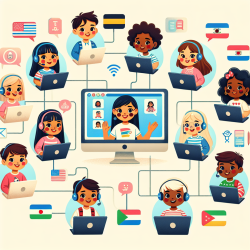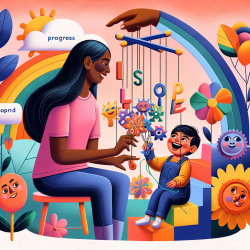Embracing Virtual Outreach: A New Frontier in Language Science Education
In the ever-evolving landscape of education, the integration of virtual platforms has become a pivotal component in reaching diverse audiences. The research article, "Taking language science to zoom school: Virtual outreach to elementary school students," provides compelling evidence on the effectiveness of virtual outreach in engaging young learners in language science.
Transforming Challenges into Opportunities
The pivot to virtual learning, initially driven by the COVID-19 pandemic, has opened new avenues for educators and practitioners. The study highlights how virtual guest speaker presentations, utilizing tools like virtual backgrounds and guided discovery learning, can captivate children as young as seven years old. This approach not only makes learning more accessible but also more engaging.
Key Findings and Their Implications
Survey data from 157 elementary students revealed that virtual presentations were both interesting and educational. These findings underscore the potential of virtual platforms in maintaining student engagement and enhancing learning outcomes. For practitioners in speech-language pathology, this presents an opportunity to leverage technology to reach students across geographical boundaries.
Implementing Virtual Outreach in Practice
Practitioners can enhance their skills by incorporating the following strategies:
- Interactive Learning: Use interactive elements such as quizzes and polls to maintain student engagement.
- Visual Aids: Incorporate virtual backgrounds and animations to illustrate complex concepts.
- Guided Discovery: Encourage students to explore language science concepts through guided activities like "Speech Detectives" and "Bilingual Barnyard."
Encouraging Further Research
While the current study provides a solid foundation, further research is needed to explore the long-term impacts of virtual learning on language development. Practitioners are encouraged to conduct their own studies and contribute to the growing body of knowledge in this field.
Conclusion
The transition to virtual outreach in language science education is not just a response to current challenges but a step towards a more inclusive and engaging learning environment. By embracing these strategies, practitioners can create impactful learning experiences that inspire and educate the next generation.
To read the original research paper, please follow this link: Taking language science to zoom school: Virtual outreach to elementary school students.










